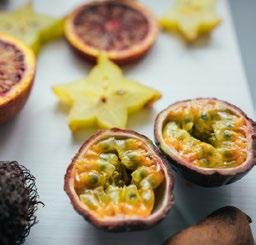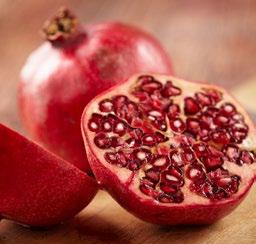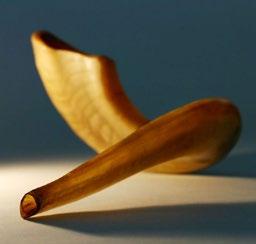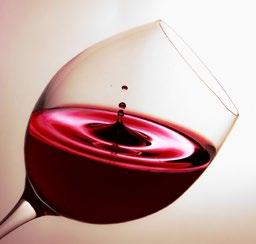
3 minute read
Simanim
Simanim (Symbols)
For each symbol, invite one person around the table to read.
Advertisement
Reader 1: APPLE + HONEY The round apple reminds us of the cyclical nature of time. We dip it in honey as we hope for a sweet year ahead.
רִ י הָ עֵ ץ ְ ְך הָ עֹולָ ם ּבֹורֵ א ּפ ֶ ל ֶ ֹלהֵ ינּו מ ֱ ּבָ רּוְך אַ ּתָ ה ה‘ א Barukh atah Adonai, eloheinu melekh ha-olam, borei p’ri ha-eitz. Blessed are you Adonai, our God, ruler of the universe, who creates fruit from the tree.
חַ ּדֵ ׁש עָ לֵ ינּו ׁשָ נָ ה טֹובָ ה ְ ּת ֶ בֹותֵ ינּו, ׁש ֲ ֹלהֵ ינּו וֵ אֹלֵ הֵ י א ֱ יָך ה‘ א ֶ פָ נ ְ הִ י רָ צֹון מִ ּל ְ י תּוקָ ה ְ ּומ Y׳hi ratzon mi-lfanekha Adonai eloheinu velohei avoteinu, shet’ addeish aleinu shanah tovah u-m’tukah. May it be Your will Adonai, our God, and God of our ancestors, to renew for us a sweet new year.

Q4D: • To what sweetness in the year ahead can you look forward?
Reader 2: NEW FRUIT Make sure everyone has a piece of the new fruit, and read before you eat:

This new fruit symbolizes the newness and freshness of the year ahead. We hope to experience things we haven’t experienced, learn new things, and discover new things about ourselves.

Note: Some people choose to only bring in a new fruit on the second night of Rosh Hashanah. Because there is a tradition of reciting the She-he eyanu blessing only the first night, people may choose to add a “new fruit,” one they have not tasted this year (or perhaps ever before!) on the second night in order to recite She-he eyanu, a blessing for newness.
Q4D: • What’s a new thing you hope for in the year to come?
Reader 3: Pomegranate Seeds Hand out a few seeds to each participant. Before eating, recite:
The lore of the pomegranate is its 613 seeds, corresponding to the number of mitzvot taught in the Torah. We eat the seeds to make the mitzvot a core part of who we are. Pomegranates are also a symbol for fertility and connect to the holiday’s themes of creation and renewal. We eat them on Rosh Hashanah to remind ourselves of the sense of possibility in the year to come.

Q4D: • To what do you hope this year gives birth?


Reader 4: Shofar The shofar is simultaneously a symbol of renewal and brokenness. The shofar, our most primal sound, is God’s call for us to do t’shuvah, repentance. It is a reminder of the ways we’ve departed from our best selves in the past year, and it is also a reminder of the growth we can accomplish and who we can become. The blasts of the shofar range from the fullness of the t’ki·ah to the cries of the sh’varim and the complete brokenness of the t’ru·ah. They are brought together with the fullness of the t’ki·ah g’dolah; we are reminded that regardless of whatever brokenness we see in ourselves, we too can become whole.

Q4D: • In what ways have you experienced brokenness this year? Wholeness?
Reader 5: Wine or Grape Juice On Pesa , we spill drops out of our own glasses, recognizing the suffering that others endured for our freedom. Today, we spill out wine from our glasses acknowledging the pain that we endured this year. We acknowledge the times we didn’t react in the best way during difficult circumstances; we own our mistakes and we hope that next year, the world, and we, are different.

Each participant can spill out 10 drops of wine or grape juice, using their pinky finger, onto a napkin or their plate.








